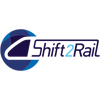OLTIS Group involved into Shift2Rail

The OLTIS Group is involved in three currently approved projects which are focused on IT solutions in support of railway services (ST4RT, GoF4R and VITE).
All projects are funded by the Shift2Rail Joint Undertaking, a European rail initiative promoting research and innovation into new rail product solutions.
In recent days, the kick-off-meetings have been organized where our representatives actively took part.
The ST4RT (Semantic Transformations for Rail Transportation) project is expected to contribute significantly to Shift2Rail’s Horizon 2020 initiative, aimed at developing interoperability technologies for multimodal travel solutions towards the goal of achieving the Single European Railway Area (SERA). ST4RT will make use of components from the Shift2Rail Interoperability Framework (IF) developed in the IT2Rail “lighthouse” project, extending it for use in related Shift2Rail projects under the “Shopping, booking and ticketing of multimodal travel solutions (S2R-CFM-IP4-01-2015)” and “Travel companion and tracking services (S2R-CFM-IP4-02-2015)” IP4 calls. The project will additionally provide a use case scenario for exercising the Governance and management structure developed under the related “IF Governance (S2R-OC-IP4-01-2016)” IP4 Open Call. The participants will perform work organized in specific work packages focused on fundamental industrial research in semantic web technologies. The cornerstone of the project will be Work Package 5 “Pilot demonstrator of IF Converters,” where a demonstrator will be used to prove the validity and effectiveness of the semantic analysis conducted in the previous work packages. The demonstrator will make use of the HEROS platform provided by Hit Rail, a tool presenting a web services interface capable of exchanging XML booking messages, and of converting them into the formats defined by Technical Document B.5 of TAP TSI.
The GoF4R (Governance of the Interoperability Framework for Rail and Intermodal Mobility) project will define a structure for integrating and sharing data across disparate transportation operators that can subsequently be used to create seamless – door to door – mobility services using any form of transportation service.
GoF4R will help to overcome the obstacles currently impeding the development of market innovation and facilitate acceptance of the semantic web for transportation. GoF4R is a project supporting the SHIFT2Rail IP4, whose aim is the provision of the framework tools and technologies allowing data exchange among different actors of the transport ecosystem, providing mechanisms to abstract data from the complexity of varied data formats and non-integrated services, and facilitating interoperability among systems. This is essential for the creation of added value services achieving a seamless multimodal door-to-door experience.
The VITE (Virtualization of the Testing Environment) project is addressed to the call S2R-OC-IP2-02-2015-IT virtualization of testing environment. The main objective of VITE proposal is to reduce on-site tests for signalling systems leading to reducing overall testing costs. The work on this project is organized in two main blocks:
- to propose a testing framework by carefully analysing user’s needs and current situation and from there building a process that can be accepted by all railway stakeholders and whose main strength will be to perform as many tests as possible in the lab,
- to propose a standard architecture for the lab testing including the interface specifications for both the connection between real equipment and the lab tools as for the connection between different labs for remote testing.
To validate the test process framework and the lab architecture demonstrations by the participating labs using real track and train data from three of the most significant European countries deploying ETCS (Spain, Italy and Belgium), as well as an assessment by NoBos, DeBos and users from these three countries are also foreseen.
The expected impact of the project is to significantly contribute to the development of a Zero Onsite testing environment.